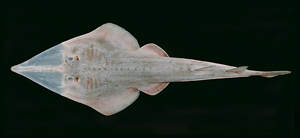We drove about 7 hours on Feb 21 from Brisbane to Gladstone under few hours heavy rain. We stayed in backpacker at night. We took 2 hrs Voyage's ship from Gladstone to Heron island at 11 am on Feb 22, then we stayed in Heron Island Research Station. My husband's lab came here to collect some animals, majority are mantis shrimp. His boss asked me if I wanted to come. Here I am. It is a lovely coral reef island. Very small and surrounding by white sand and huge coral reef. There are many birds live on this island and this makes the island stink. There is one kind of bird makes baby crying and howling noise at night. That's kind of annoying. If you don't know that's from that bird, you will think that's ghost whisper. It rained everyday while we were there, sometime the rain was so big that we were almost unable to work under it. But I think the rain did wash away some sting smell. It was quite windy and kind of pain when wind blew sands onto our skin.
We snorkeled everyday, broke coral reef to catch the shrimps every afternoon at low tide. We walked around the beach of island every night to look for turtle laying eggs and hatching. We saw just hatched green turtle trying to crawl into the ocean, we saw big and young adult green turtles digging big and deep nest holes for hours, we saw one laying eggs, and we saw them covering the nest up for more than 1 hour. We went to check the coverred nest during day time and it is hard to tell where it is. It is very exciting to see this. We also tried to rescue some baby turtle from bird's mouth or took some miss-orientation baby turtles back to ocean. This is an amazing experience to hold them on our hands.
We saw many marine animals, such as
(1) many climbing, digging hole, laying eggs and covering eggs adult Green Turtle or just hatching baby green turtles

 (from wiki),
(from wiki), (2) many different gobies (family Gobiidae) and some have shrimps with them
 (from wiki),
(from wiki), (3) many giant clam

 (from wiki), .....,
(from wiki), ....., (4) many different colorful damselfish (family Pomacentridae)

 (from wiki), .....,
(from wiki), ....., (5) two stingray
 (from wiki),
(from wiki), (6) 1 shovelnose,
 (from FishBase)
(from FishBase)(7) 1 pufferfish (Diodontidae)
 (from wiki),
(from wiki),(8) 1 lionfish
 (from wiki),
(from wiki), (9) at least one Labroides dimidiatus (cleaning fish)
 (from FishBase)
(from FishBase)many unknown or name forgotten big and small fishes, ...
I did not dive, so I did not see clown fish.
If I can come again with my husband's lab, I will come. I love this trip.
Feb 21: driving 7 hours from Brisbane to Gladstone, heavy rain, staying in backpacker
Feb 22: taking 2 hours Voyage's ship to Heron island, a little bit bumpy, hire snorkeling stuffs for me, breaking rock several hours to get animals in the afternoon
Feb 23: driving boat to Wistari Reef to collect animals in the afternoon (ps. stop boat at ~50 m distance to the reef, then snorkeling to the edge and climbing onto it, very pretty). Heavy rain.
Feb 24: driving boat to north of Heron reef in the afternoon, other people went diving and I stayed on the boat. Rain.
Feb 25: snorkeling in the morning and afternoon, we couldn't go out because the shipping ship blocked the harbor, we collected animals on the reef around island. Rain.
Feb 26: snorkeling in the morning and afternoon, we couldn't go out because it was too windy and nobody was allowed to go out with boat, we collected animals on the reef around island. Rain.
Feb 27: Organize and pack all animals and personal stuffs. Clean up the place we lived and all the tanks, take Voyage's ship back to Gladstone, drive back and put animals into tanks. Sunny.
Read more!
